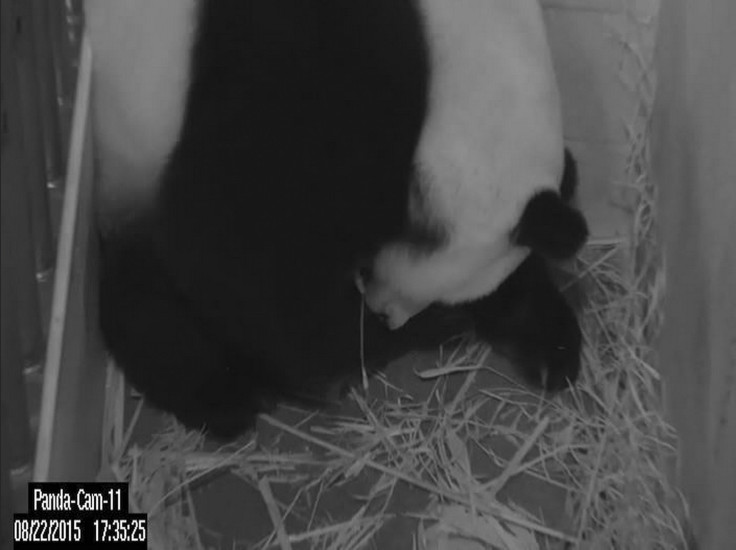Panda Cub Born At National Zoo In Washington As Expectant 'Panda Cam' Viewers Watch

The National Zoo in Washington welcomed the birth of a panda cub Saturday, born to giant panda mom Mei Xiang at 5:35 p.m. She had an audience: online "panda cam" viewers who overwhelmed the web feed as they watched streaming footage of Mei Xiang hunched in a corner during the delivery.
VIDEO: Giant panda Mei Xiang gives birth to a cub at 5:35 p.m. Aug. 22, 2015 http://t.co/FQDg4GtidN #WeSaveSpecies #PandaStory
— National Zoo (@NationalZoo) August 22, 2015"The panda cam is at capacity," a spokeswoman for the zoo said during a press conference. "It will be for a while." She added panda fans clamoring to see more can download the National Zoo's app and "stream to your heart's content."
The baby panda won't get a name for 100 days. Zoo officials also do not yet know the gender, or the paternity, of the cub, NPR reported. Mei Xiang was artificially inseminated twice this past spring, with sperm from two potential dads.
The father could turn out to be Tian Tian, who resides at the National Zoo and, through artificial insemination, sired Mei Xiang's two other cubs: Tai Shan and Bao Bao. Or it could be Hui Hui of the China Conservation and Research Center for the Giant Panda in China's Sichuan Province. Hui Hui, apparently, is an excellent genetic match for Mei Xiang.
Mei Xiang lost a female cub within a week of its birth in 2012. Her and Tian Tian's reproductive challenges were the subject of an extensive 2013 profile in the New Yorker. “Some pandas know how to have sex, and some don’t,” David Wildt, the head of the National Zoo's Center for Species Survival, told the magazine at the time.
Officials Saturday said the new cub "would not have been possible" without the help of scientists affiliated with the Smithsonian Conservation Biology Institute, including endocrinologists, reproductive physiologists, and veterinarians.
© Copyright IBTimes 2024. All rights reserved.











